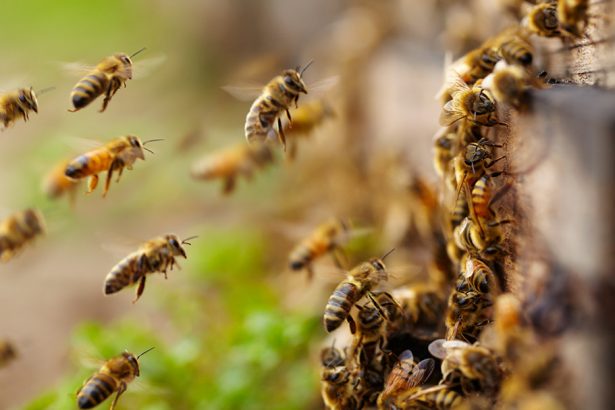Psychoneuroendocrinology – That’s Easy for You to Say! The Science of Happiness and The Happy 5

Psychoneuroendocrinology – That’s Easy for You to Say!
The Science of Happiness and The Happy 5
“If you can’t measure it, you can’t improve it.” – Peter Drucker
“Psychoneuroendocrinology”
Whilst the word itself is quite supercalifragilisticexpialidocious, let me cut to the chase, this blog is about the science of happiness.

Yes, happiness is a science. It’s not just about “good vibes” or “thinking positively”, and chanting “ooooohhmm’ half way up a mountain – It’s about real, measurable biological processes—hormones, neurotransmitters, and neural pathways that dictate how we feel, think, and act.
And here’s the exciting part: if we can measure happiness, we can improve it.
That’s where psychoneuroendocrinology (or PNE for those of us who don’t want to pull a muscle trying to say it) comes in. It’s the study of how your thoughts (psycho-), brain and nerves (neuro-), and hormones (endocrinology) all interact. In other words, it’s the scientific foundation of The Happy 5.
Oh, and while we’re talking about measuring happiness—watch this space. We’re developing a Happiness Biometric Indicator (HBI) to track and improve well-being in a novel way that’s not been done before. More on that later.
For now, let’s dive into the brain science behind The Happy 5 and how it hacks your biology to make you happier.
How The Happy 5 Hacks Your Brain Chemistry
“The good life is one inspired by love and guided by knowledge.” – Bertrand Russell
The Happy 5 isn’t just a feel-good philosophy. It’s backed by hard science—specifically, the chemistry of your brain. Every time you engage in one of these five daily habits (Move, Give, Connect, Calm, Grow), you activate key neurotransmitters and hormones that boost your well-being.
Oh, and we’re throwing in some animal inspiration to help you remember each one.

1. Move: The Endorphin Rush 🏃♂️🐆
“A sound mind in a sound body.” – Juvenal
Be like a cheetah. Fast, focused, always ready to move!
Ever heard of a “runner’s high”? That’s endorphins at work. These are your body’s natural painkillers and mood boosters, released when you exercise, dance, stretch, or even just go for a walk.
Endorphins act like mini doses of morphine, reducing pain and creating a euphoric sensation. That’s why people who exercise regularly tend to be happier, it’s not just about looking good; it’s about feeling good at a chemical level.
👉 PNE Fun Fact: Endorphins were discovered in the 1970s when scientists realised that heroin wasn’t the only thing that could make people feel euphoric. Turns out, your body produces its own natural high, without the risk of addiction or regrettable tattoos.

2. Give: The Serotonin Stabilizer 🌰🐿
“We make a living by what we get, but we make a life by what we give.” – Winston Churchill
Be like a squirrel. They give without even realising it, burying acorns that grow into trees, feeding future generations!
Kindness isn’t just good for the soul, it’s good for your serotonin levels. Serotonin is the mood stabilizer of the brain, regulating emotions and keeping anxiety at bay.
When you do something generous—buy someone coffee, donate to charity, or simply offer a kind word—your brain rewards you with a boost of serotonin. It’s why generosity feels good, not just morally, but biologically.
👉 PNE Fun Fact: Studies show that even witnessing acts of kindness boosts serotonin. That’s why heartwarming viral videos are so addictive, they’re like little chemical pick-me-ups.

3. Connect: The Oxytocin Generator 🐧☕
“We are all in the gutter, but some of us are looking at the stars.” – Oscar Wilde
Be like a penguin. They literally huddle together for warmth, teamwork makes the dream work!
Human connection is not a luxury—it’s a biological necessity. Every time you bond with someone—through conversation, hugs, or even eye contact—your brain releases oxytocin, also known as the love hormone.
Oxytocin deepens relationships, reduces stress, and increases trust. It’s why strong social connections are the biggest predictor of long-term happiness.
👉 PNE Fun Fact: Oxytocin is the same hormone released when mothers bond with their newborns—and when dogs gaze lovingly at their owners. (Yes, your dog really loves you.)

4. Calm: The GABA Chill Pill 🐢🧘♂️
“Peace begins with a smile.” – Mother Teresa
Be like a tortoise. Slow, steady, unbothered, thrives on taking it easy.
Ever felt overwhelmed, anxious, or like your brain is running a marathon inside your head? That’s low GABA levels at play.
GABA (gamma-aminobutyric acid) is the brain’s natural calming agent. It slows down nerve activity, reducing anxiety and promoting relaxation. Meditation, deep breathing, and even just sitting quietly help increase GABA levels, shifting your nervous system into chill mode.
👉 PNE Fun Fact: GABA is like your brain’s ‘off switch.’ Without it, your thoughts would be like 100 browser tabs open at once.

5. Grow: The Dopamine & Serotonin Power Duo 🐙📚
“Live as if you were to die tomorrow. Learn as if you were to live forever.” – Mahatma Gandhi
Be like an octopus. Highly intelligent, constantly learning, problem-solving, and evolving.
Growth isn’t just about learning new skills—it’s about rewiring your brain for long-term happiness. When you challenge yourself, set goals, and achieve things, you release dopamine (the motivation chemical) and serotonin (the mood stabilizer).
Dopamine makes you excited about progress. Serotonin makes you content once you’ve mastered something. This power duo is why self-improvement feels so rewarding.
Measuring Happiness: The Future is Coming
For centuries, happiness was considered an abstract concept—something you felt but couldn’t quantify. But what if we could measure happiness biologically?
That’s exactly what we’re working on with the Happiness Biometric Indicator (HBI)—a revolutionary approach to tracking well-being using biological data.
Watch this space. The future of happiness measurement is coming. If you’d like to know more about this, and maybe ven join our pilot study, please get in touch with me!





